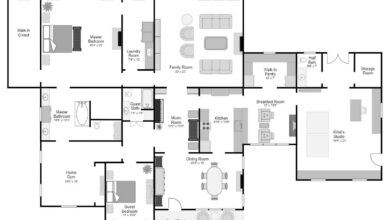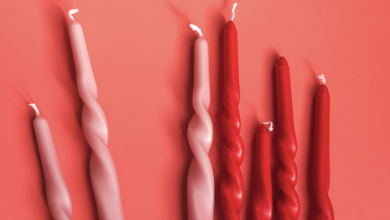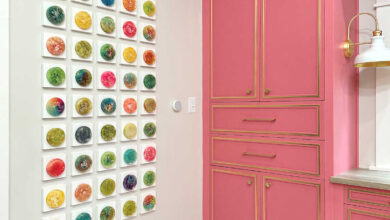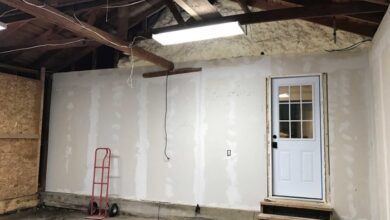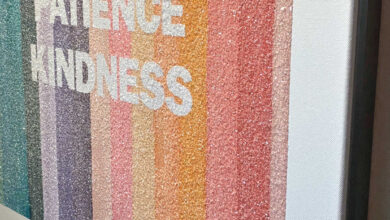DIY Gradient Wood Tasting Spoon Pendant Light – Part 1
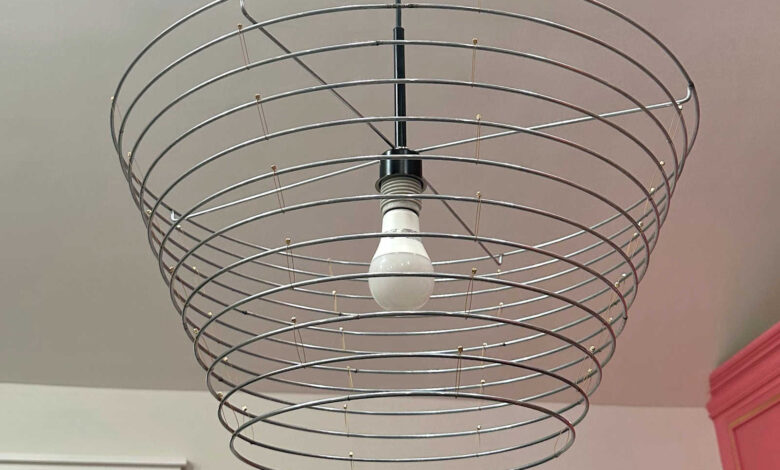
I should have spent yesterday finishing up the trim in the studio, but instead, I decided to work on the pendant light that will go over my desk. After considering several different options, including both ready-made and DIY lights, my mom suggested that I make a pendant light inspired by a piece of artwork that I made for our living room.
This gradient wood tasting spoon pinwheel that hangs in our living room is my favorite piece of art that I’ve ever made. I love everything about it, from the size of the wood tasting spoons, to the colors, to the gold accents. So when she suggested turning this idea into a pendant light for my studio, I was on board with that idea immediately.

I’ve been working on getting the spoons prepared for a couple of weeks now. It has been very time consuming, and I’m only about 1/3 of the way finished with prepping the spoons. I determined that I’ll need about 1000 spoons for the light, which means that I had to cut the handles off of 1000 wood spoons at the neck, and then sand the remaining bowls to round off each piece. Once I get all of those sanded, I can start priming and painting the spoon bowls.
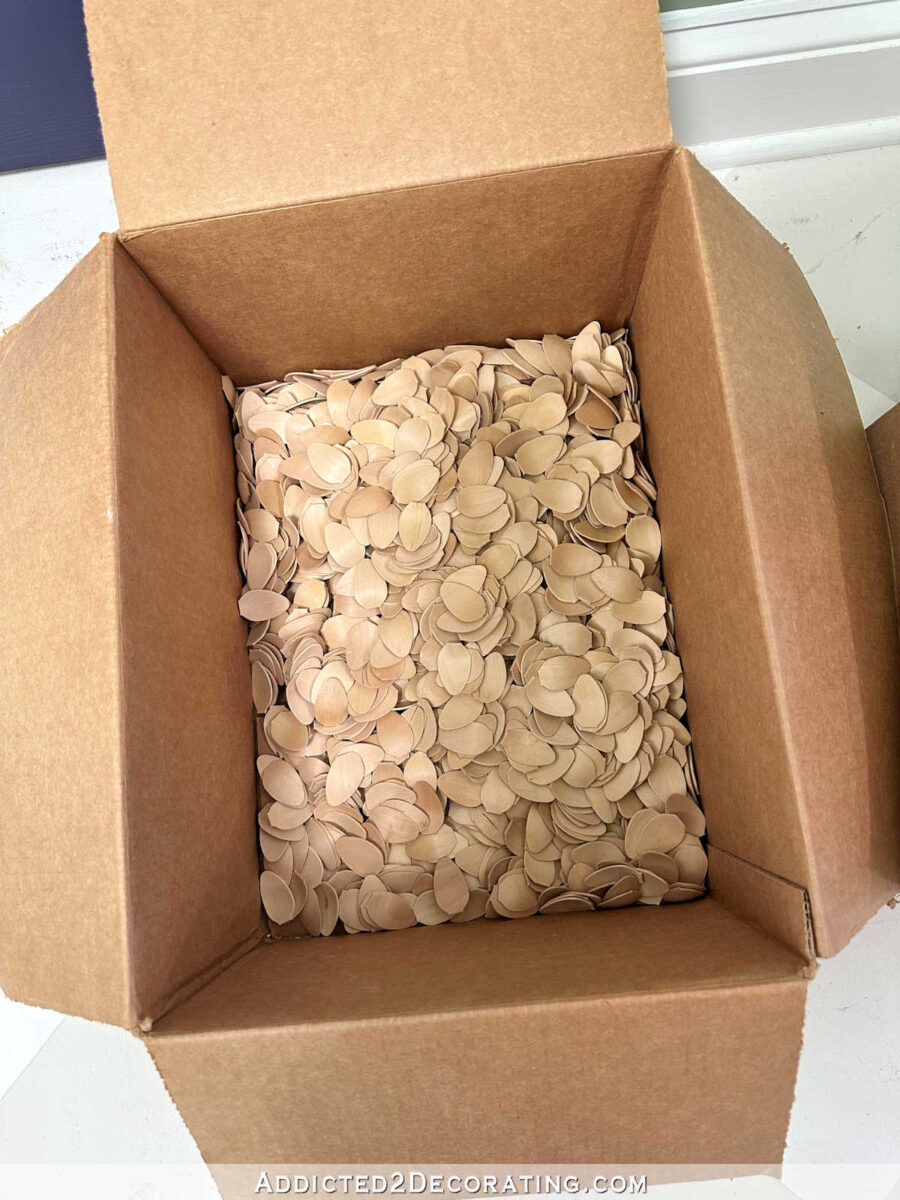

But yesterday, I decided to work on the other part of the pendant light, which is the actual frame that the spoon bowls will eventually be attached to. In order to make the frame, I purchased one 22-inch lamp shade wire that has the frame that attaches to the light/lamp (i.e., the top lamp shade ring). (Sorry, but I don’t know the technical terms for these parts, and I can’t find my invoice from the place where I purchased these.) Using a make-your-own-pendant-light kit from Lowe’s, I attached the 22-inch lamp shade wire to the light kit and then installed the light.


Here’s a look at it from the top. Please excuse all of the mess in the background. 😀
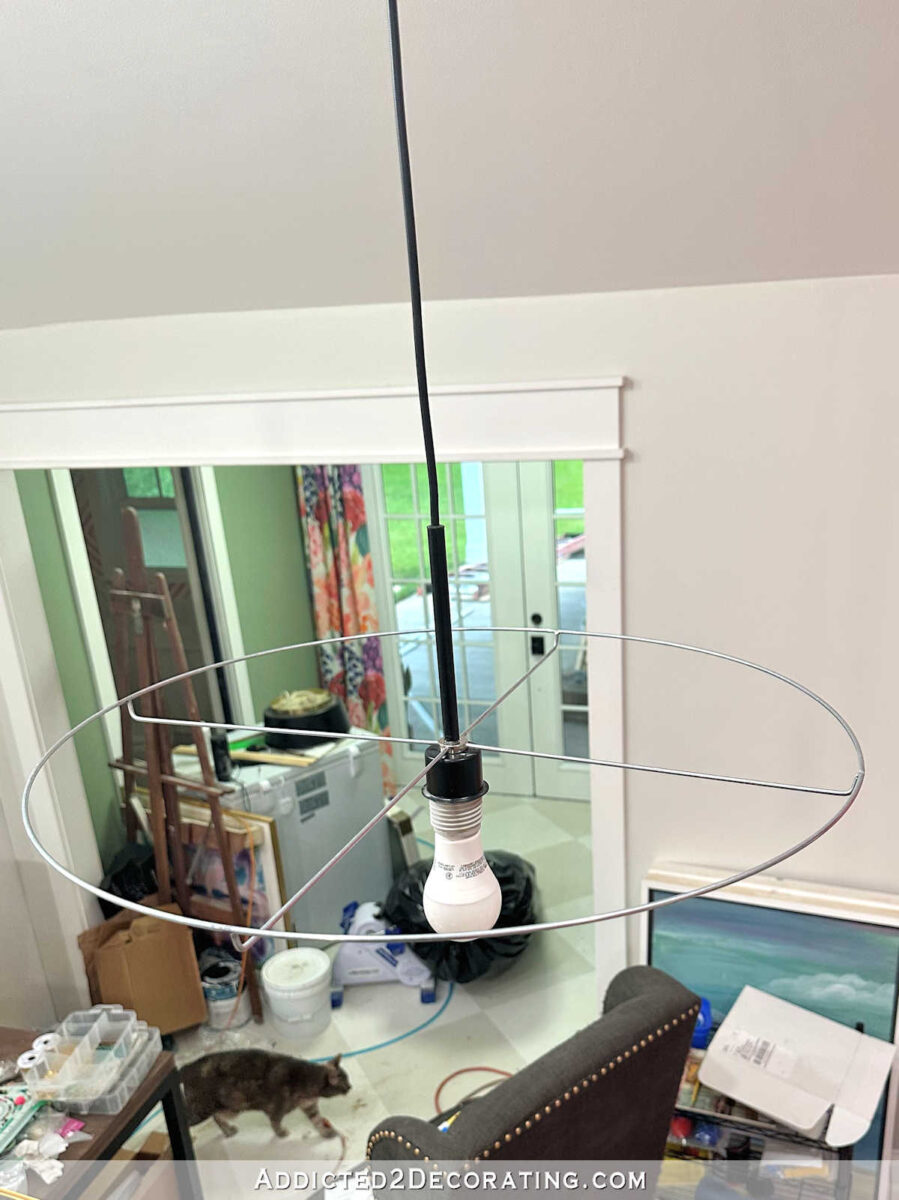

In addition to that top ring, I also purchased 19 additional bottom lamp shade rings from 21″ to 3″, and every whole-inch size in between. I wasn’t sure how many I would end up using, but my pinwheel artwork has 20 rows of spoons, so I bought 20 rings in total.
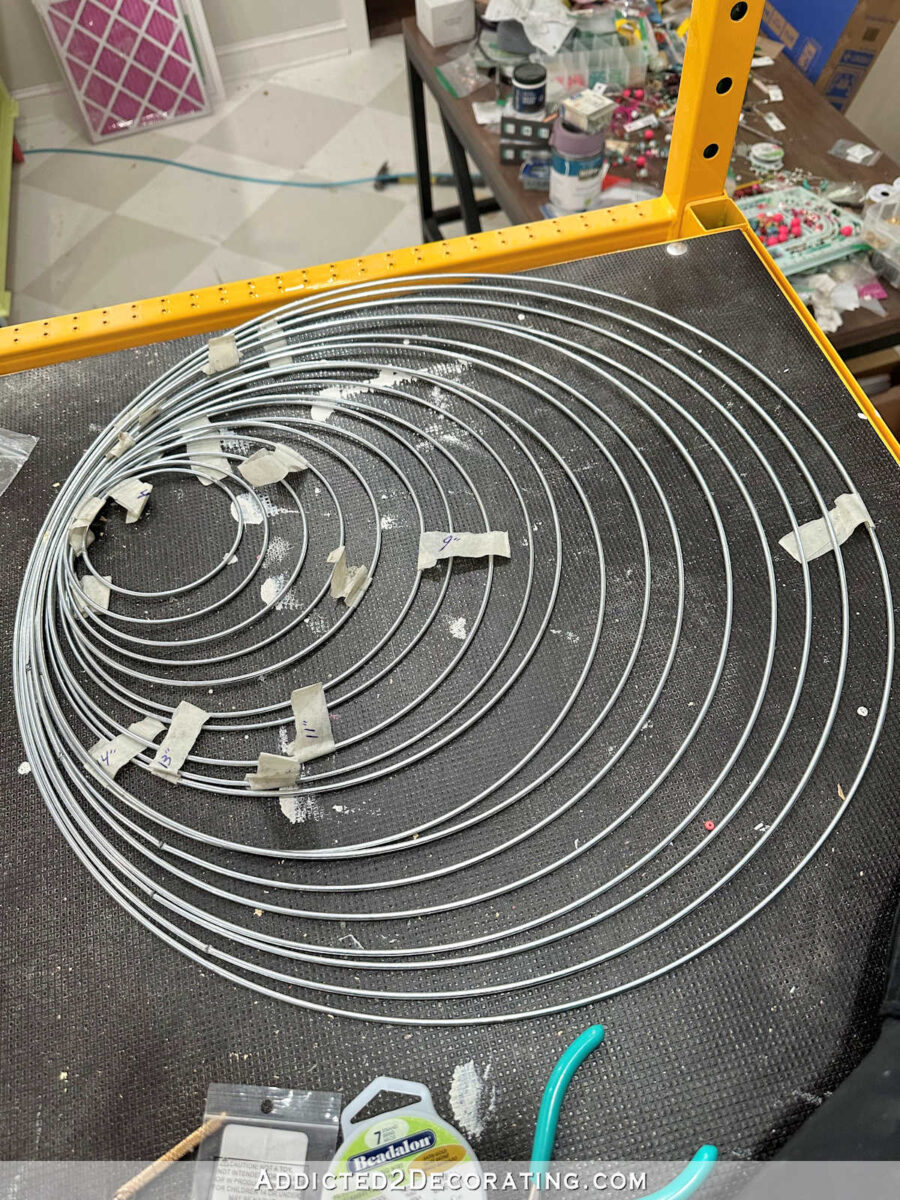

After considering several different options for connecting the rings to each other, I finally decided that this would be the perfect opportunity to put my newly acquired jewelry-making skills to work on a non-jewelry project. So I purchased some beading wire…
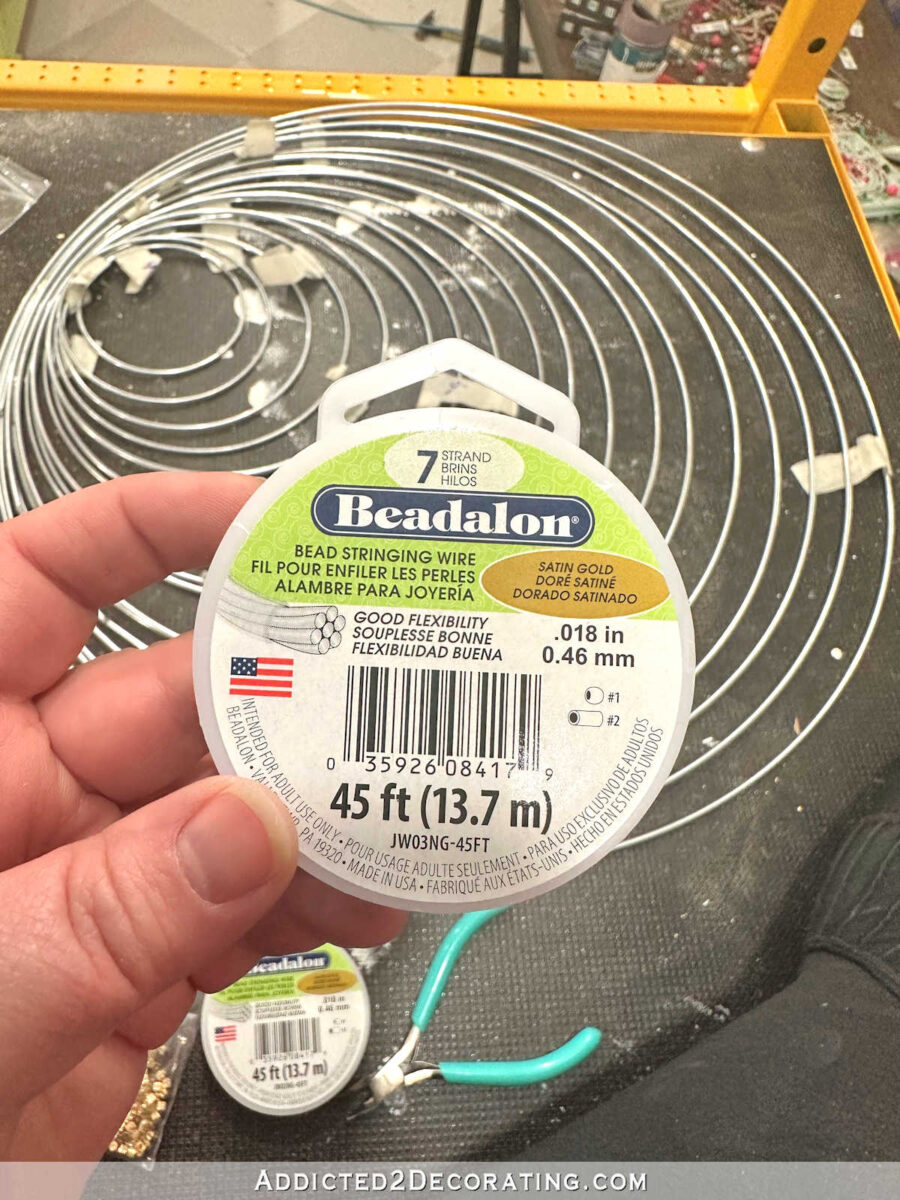

And then I purchased these screw-tite crimp beads. When I make necklaces, I have quit using actual crimp beads because I had a necklace fail and come apart while I was wearing it. When that happened, I went in search of a better way to secure beads on beading wire, and I found these screw-tite crimp beads. Each bead has a tiny little screw on the side that tightens onto the beading wire to secure it. This is what I use on my necklaces now, so I purchased a package to use on my pendant light.


It’s so tiny that I had a very difficult time getting my camera to focus on the actual screwdriver.
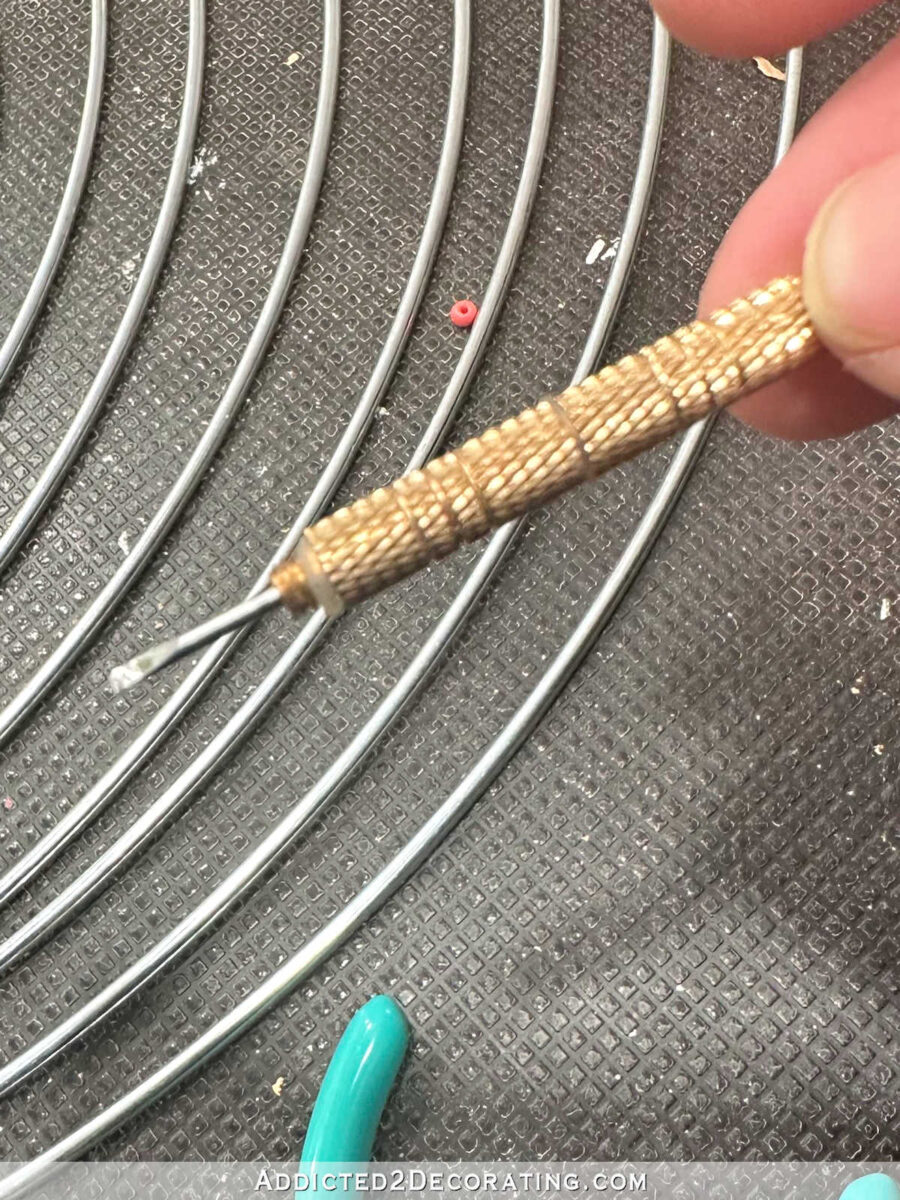

Anyway, you can see how tiny it is. It’s like one of those small screwdrivers you would use to tighten screws on a pair of glasses.


And to cut the beading wire, I used my little jewelry-making wire cutters.


I cut pieces of the beading wire to 3 inches long…
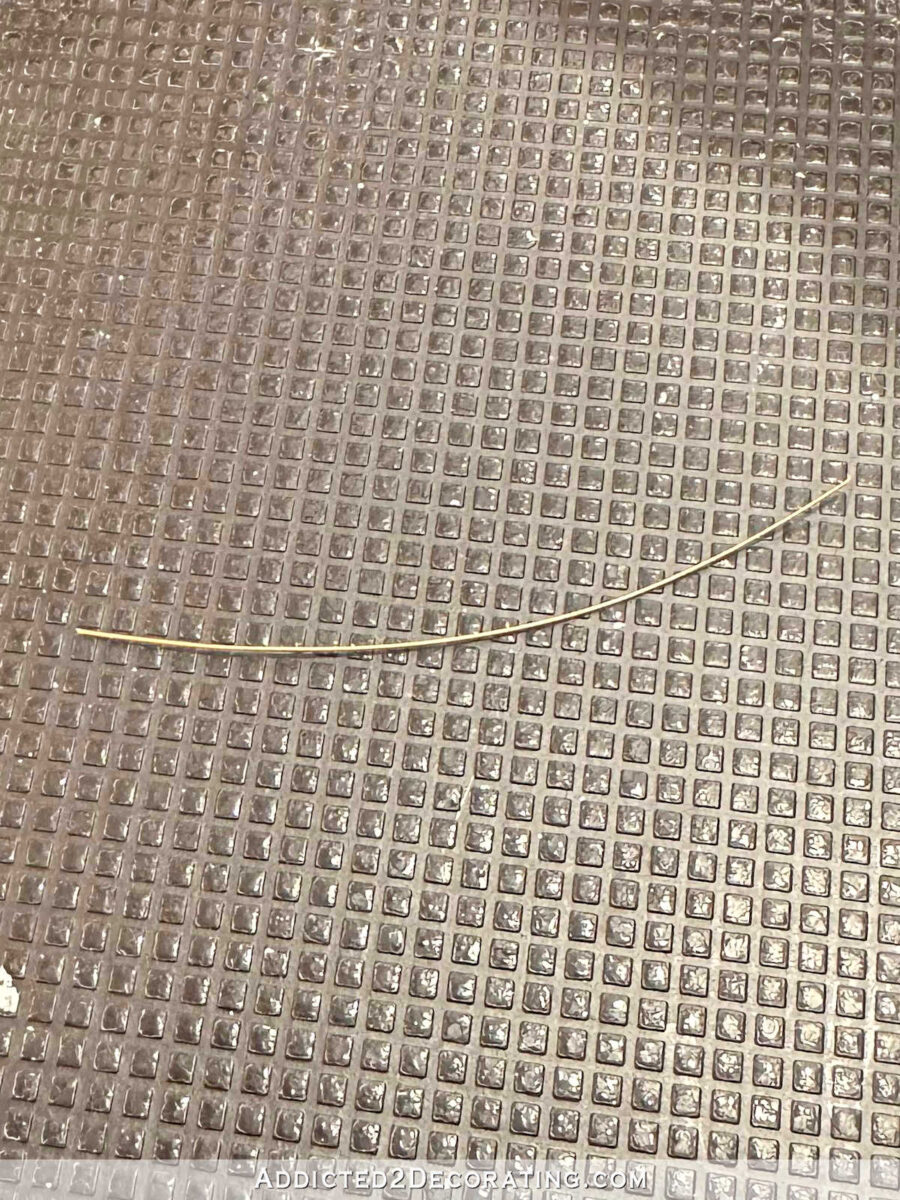

And then I bent the pieces of wire in half.


I wrapped the bent wire around two lampshade rings, put the ends of the wire through a crimp bead, and then tightened the screw on the crimp bead. I used four pieces of wire to secure each lampshade ring to the previous ring.
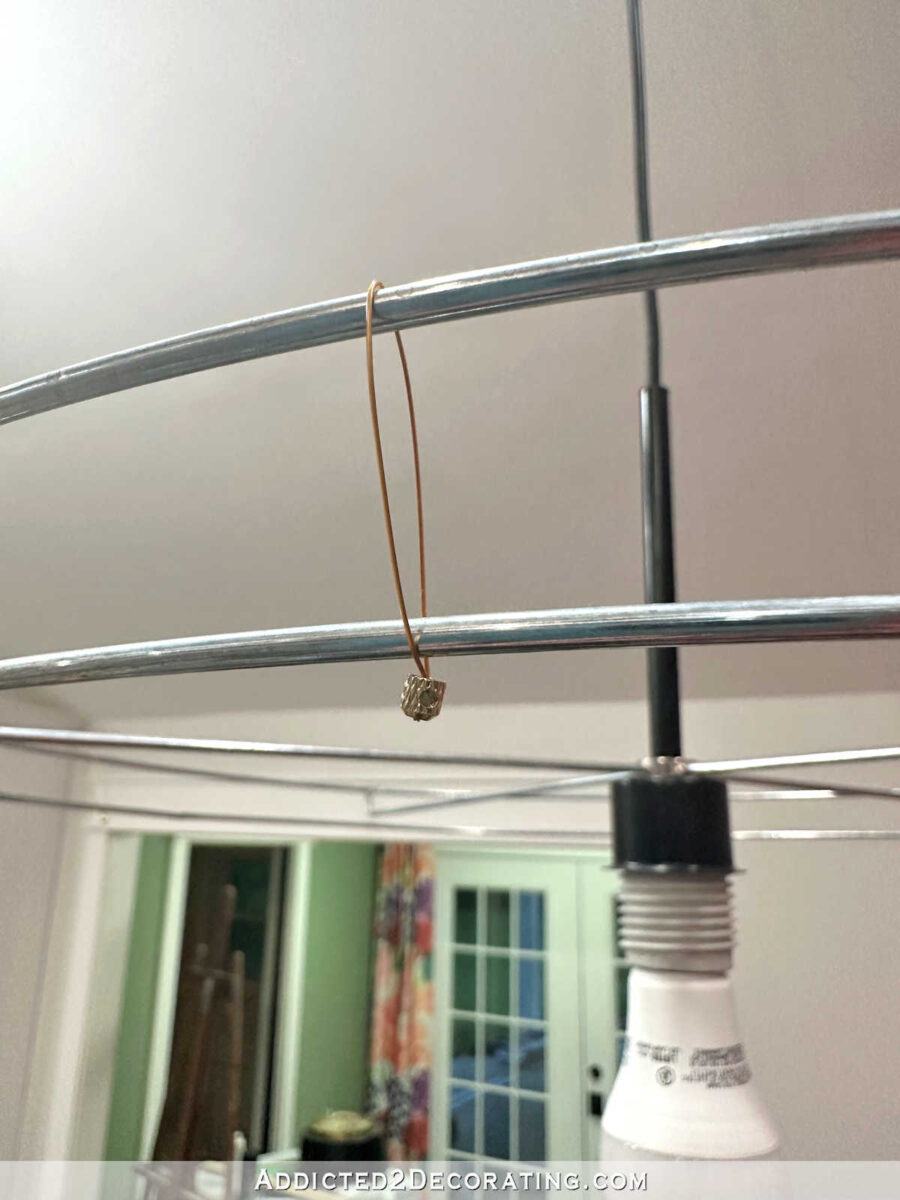

I continued that process until I had 12 rings attached, with each ring attached to the previous ring using four pieces of wire and four crimp beads.


You can see in the photo below how I staggered the wires with every other ring.
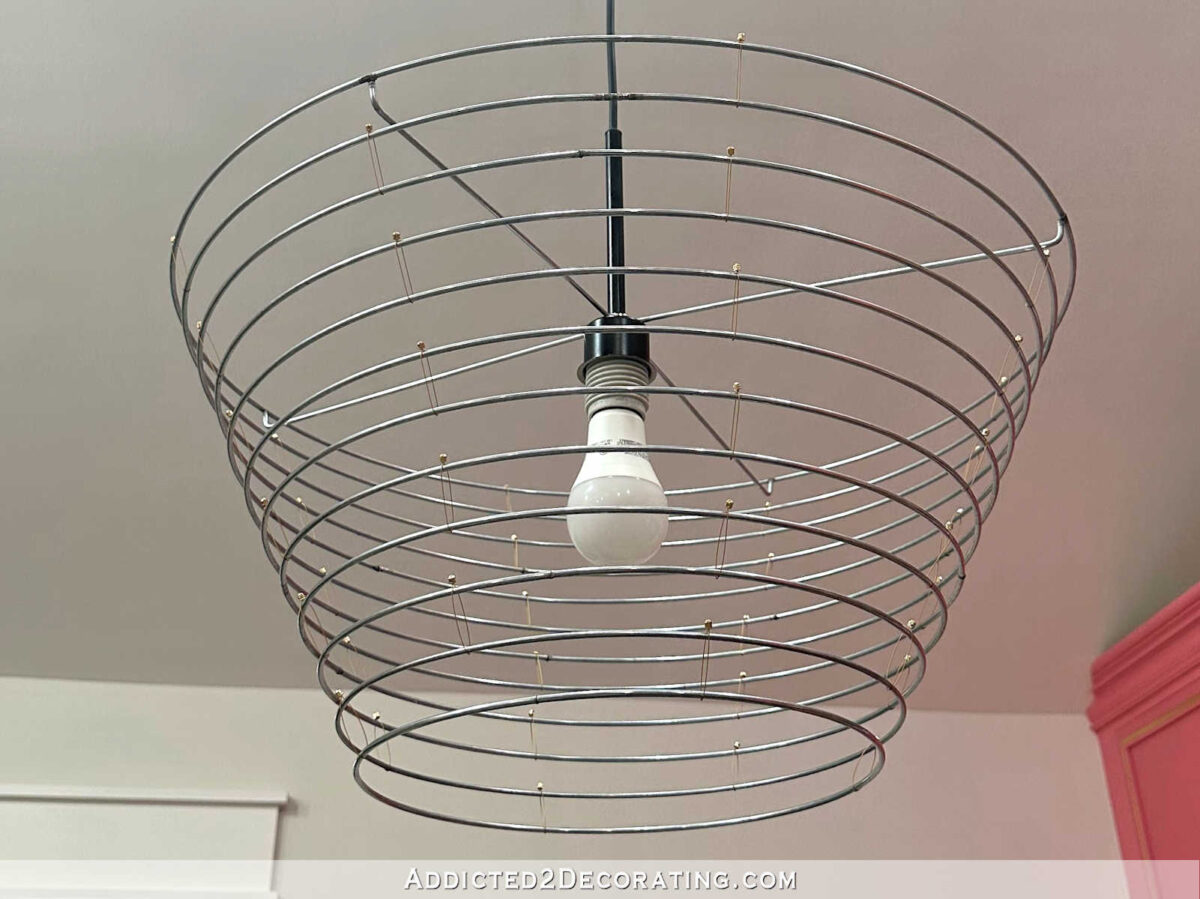

I stopped at 12 rings, but I may add three more for a total of 15 rings. And then once I get all of the spoon bowls sanded, primed, and painted, I’ll drill a hole on each bowl and attach each one to the pendant light form using 10mm jump rings.


I’m still unsure about the color(s) that I’ll be using on the spoons. I don’t know if I’ll try to fit a rainbow of colors on the light like I did on the original pinwheel artwork, or if I’ll just do a subtle gradient from one color to another. Or I could even choose just one color, and do an ombre design from dark on the top and get gradually lighter towards the bottom. I’m not sure yet, but it’ll come to me. Stay tuned for the rest of this project
Addicted 2 Decorating is where I share my DIY and decorating journey as I remodel and decorate the 1948 fixer upper that my husband, Matt, and I bought in 2013. Matt has M.S. and is unable to do physical work, so I do the majority of the work on the house by myself. You can learn more about me here.
Source link



